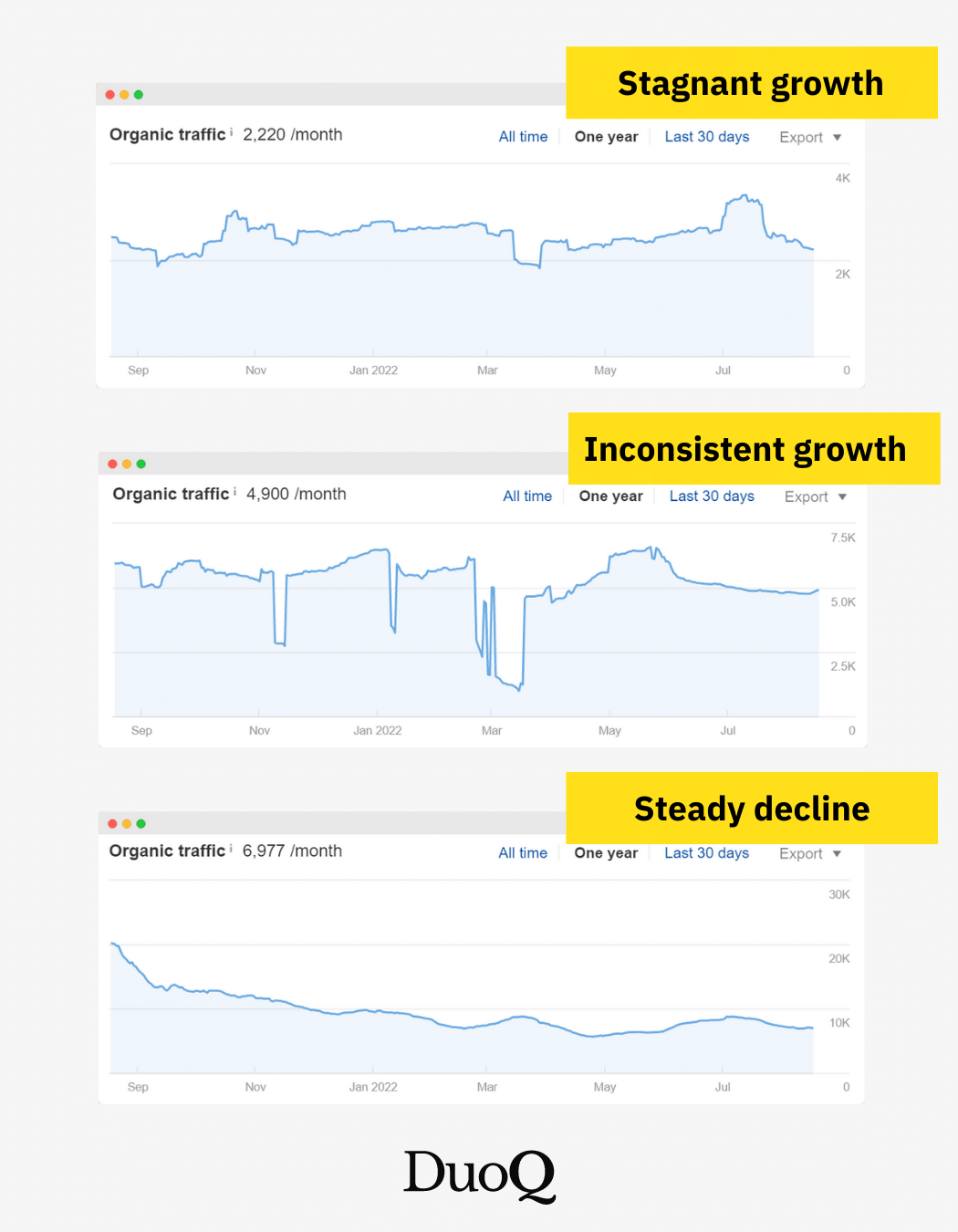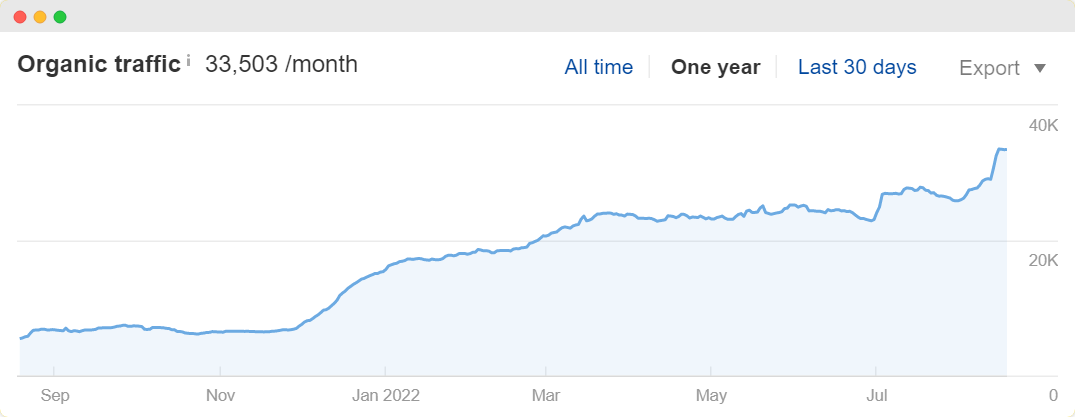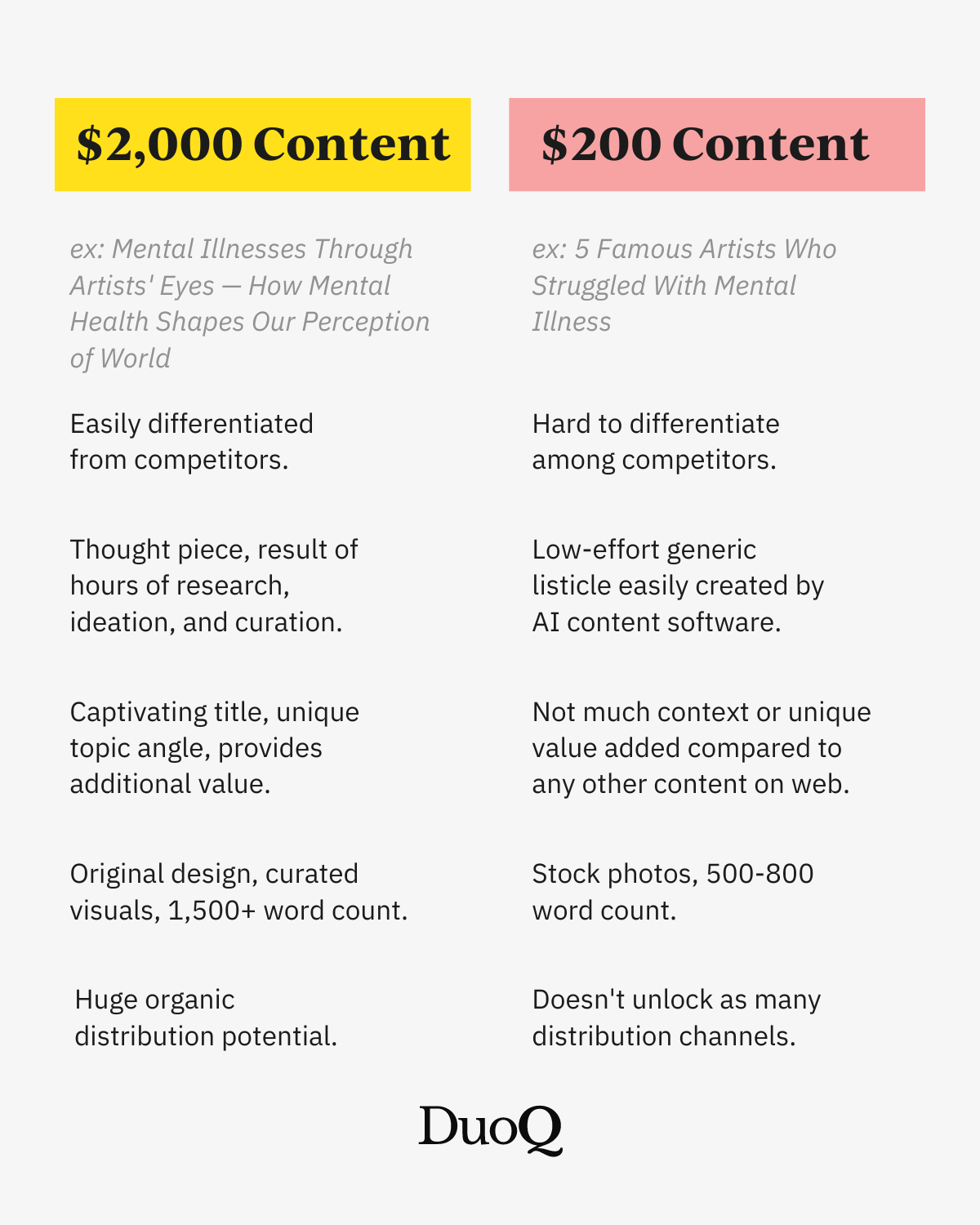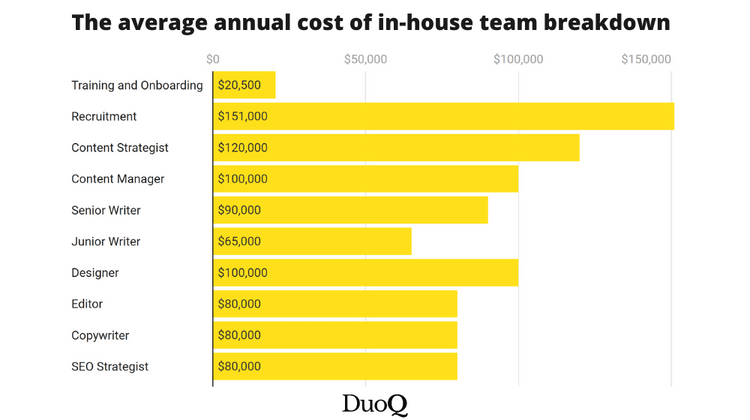Remember the old cliche sales line go big, or go home?
Good—because that’s the right mindset to adopt when approaching content marketing.
Maybe you think you should “just start with something.” Or that “doing anything is better than nothing.”
Sure, but long gone are the days when you could get great results with sub-par content.
I know that cost-effectiveness is important, but the danger of getting it wrong and losing to competitors is greater than paying more to get a larger market share.
So, the crucial question is: Do you want to be just another publisher or get more customers?

Don’t ask: “How much will this set us back financially?”
Instead, ask: “What market share can I get with this investment?”
The pure act of just creating content is relatively easy—everyone speaks, hence, everyone can write, right?
But, crafting content that ranks, unlocks new distribution channels, attracts SQLs and MQLs, solves problems, and essentially differentiates you in the sea of feeble marketing attempts, is what makes a bank.
Content done for the sake of content has a negative ROI in a long run and can set you back for hundreds of thousands of dollars, and result in stagnant, inconsistent, negative growth:

Remember, you are never paying for a blog post, infographic, or any other marketing asset—you are paying for what that content can do for you.
And the only time it makes sense to pay for results is if they are going to be positive ones:

An example of good consistent organic growth.
Think of content creation as asset building. High-quality evergreen content is created once but distributed forever, aiding sales & marketing.
The cost discrepancy: $200 blog post vs. $2,000 blog post.
What is the reason some agencies charge thousands of dollars per blog post, while others can do it for a couple hundred bucks?
The answer ultimately boils down to LOW effort vs. HIGH effort.
Search engines are populated with low-effort, mediocre results where every other post is nothing but a mere repetition of the previous one.
To solve this issue, Google has released a new update in its algorithm that focuses on ranking original, people-first content:

Source: What creators should know about Google’s helpful content update, August 18, 2022.
It’s easy to charge $100-500 per blog post when all you do is browse keywords for 30 minutes, pull out the one you like the most, stuff it into the title and subheadings, write around 800-1200 words, add uncompelling CTAs and use free generic stock photos that don’t visually enhance messaging.
And that’s how 90% of the content on the internet is made.
If you think that people can be tricked—that they can’t tell great content apart from a cheap byproduct of marketing—you’re wrong.
People are smart and increasingly marketing savvy. They know whether the content genuinely answers their question, or just tries to sell them your product.
That deception strips away trust between you and your audience, angers them, and makes you less credible.

Top-tier content—jammed with rich media that helps, engages and educates—is what builds trust, credibility, and ultimately brings in money.
And, the only way to earn that is by understanding what the audience wants but doesn’t have, and filling up that gap.
This is not solely a writing problem, but also a strategy and execution problem.
Good agencies have skilled strategists who can dig up gold and separate it from the ore, writers who can craft a compelling story, and designers who can elevate it with distinct visuals.
In the end, a high-performing blog post involved at least three people, a ton of research, ideation, curation, connection with data points, and design. Typically, no agency can provide you with that for less than $800 per post, conservatively speaking.

Compared side by side, it’s apparent that the post on the left is a result of thorough research, accompanied by clear visuals and easily scannable text.
Righteously, it attracted a heap of shares:

Source: BuzzSumo Content Analyzer
If the goal of this post was to go viral, then every investment paid off. Yay ROI!
Always remember: Content marketing is not expensive, bad content marketing is expensive.
Say you worked with an agency that delivered poor-quality content for six months. Your total investment was $12,000 for 24 posts, $500 per post.
The performance of content was a flat line—no significant increase in traffic, no conversions.
You didn’t just lose those $12,000, you were sat back for six months and all the possible results you could’ve gained had you worked with a better agency.
Moreover, your competitors who knew the value of content are now months ahead of you, making it even more difficult to surpass them.
A less obvious opportunity for a $2k post is that you can repurpose it. Break it down into 20 smaller content pieces and distribute it on other channels: a Twitter thread, Instagram carousel, LinkedIn post, or a YouTube video.
None of which is possible with cheap content—because it’s all fluff.
How do in-house teams and freelancers stack up against agencies?
If you are considering an in-house content team just to cut costs, don’t bother. The cost of an internally produced content piece often exceeds $2k as well.

Building an in-house team from scratch is time-consuming, and it will take at least three months of onboarding and training to produce the first post worthy of publishing. Which further increases the cost of content marketing.
In contrast, a successful partnership with freelancers requires experienced internal oversight, guidance, and editing—it sounds cheaper until you break it down.
The average salary of a content strategist is $100k and freelancers with acceptable writing charge $300 for 1,500 words.
Remember that freelancers won’t have enough time and resources to properly understand your branding and product, which will make it hard to nail the messaging.

I wouldn’t recommend you walk down that road, especially if you want consistent top-quality content production.
I wrote an exhaustive piece on this issue that you can check here:
The Outsourcing Dilemma: Content Agency vs. Freelancers vs. In-House Teams
Stop giving away market share to competitors with a worse product
In case you were thinking about postponing content marketing activities for maybe next year—don’t.
If you own the search engines across your niche, you basically have a money-printing machine.
But getting to that point is a long journey. It takes at least 3-6 months to get results from content, and the more you postpone it, the longer it will take to expand your organic market reach.
If you really can’t invest enough to get it done correctly, for whatever reason, consider other forms of marketing that can get the wheel rolling quickly and generate leads right away.
As soon as you have revenue that allows you to expand on other channels, start investing in content.
And the companies who have an extensive marketing budget and still haven’t tapped into the power of organic content, what are you waiting for?


